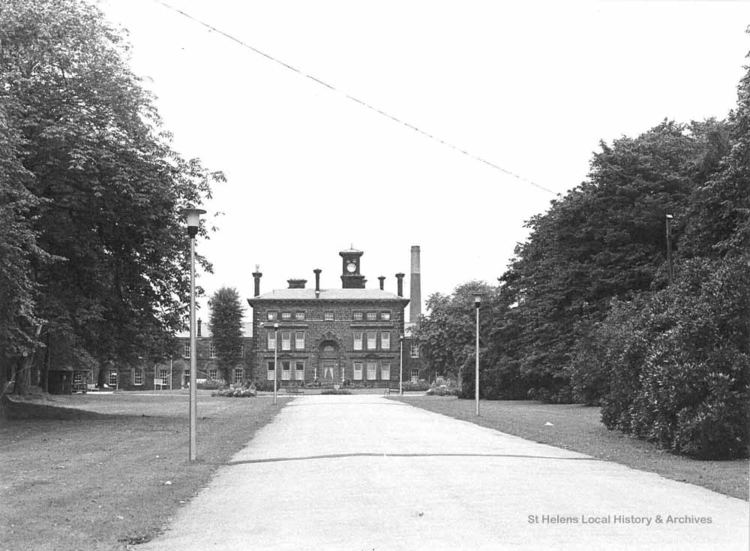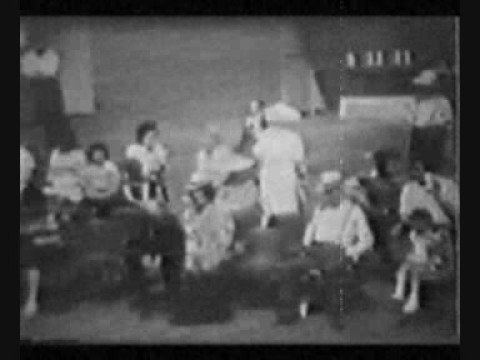Hospital type Psychiatric Closed 1991 Founded 1851 | Emergency department No | |
 | ||
Similar | ||
Rainhill hospital 1992 the empty wards
Rainhill Hospital was a very large psychiatric hospital complex that was located in Rainhill, formerly Lancashire but now Merseyside, England.
Contents
- Rainhill hospital 1992 the empty wards
- Rainhill Hospital Gala 1970
- History
- Hospital Buildings
- Care in the Community and Eventual Closure
- Other
- References

Rainhill Hospital Gala 1970
History
Rainhill Hospital was opened on the 1st January 1851, as the third County Lunatic Asylum in Lancashire.

The hospital was known by a variety of names throughout its existence, initially as the Lancashire County Lunatic Asylum from 1851 to 1861, the County Lunatic Asylum, Rainhill from 1861 to 1923, the County Mental Hospital, Rainhill from 1923 to 1948, and later Rainhill Mental Hospital and finally Rainhill Hospital until its closure in 1991.

Rainhill Hospital was once the largest and busiest psychiatric hospital not only in the county of Lancashire, but the whole of the United Kingdom and Europe itself when in 1936 at the peak of its activity there was approximately 3,000 inpatients resident at the hospital.
Hospital Buildings

The hospital complex was divided into two sites by Rainhill Road, a main traffic thoroughfare that still exists to the present day. The divisions were as follows:


The buildings at the Sherdley Division were designed by Harvey Lonsdale Elmes. Initially being the original and only main buildings at Rainhill Hospital, when closures were made to asylums in Liverpool; tremendous pressure was placed on the facilities. Additional wings were added to the Sherdley site with further extensions later constructed on a piecemeal basis. However, it was not until 1877 when plans were put in place by the local superintendent to double the size of the asylum to increase its capacity that a new annexe was constructed to the north-west of Rainhill Road. The annexe would later become known as the Avon Division. The Avon Division was noted for its linear design and long corridor, with some former staff claiming that it was the longest hospital corridor in Europe at the time.
The new annexe at the Avon Division was designed by George Enoch Grayson and Edward Ould, constructed from brown brick with terracotta dressings in the Queen Anne style popular at the time. Two water towers rose above the complex, providing a landmark for the local area for the next hundred years.
Both the Avon and Sherdley Divisions were connected by an underground tunnel, constructed beneath Rainhill Road and accessible only by those who worked at the hospital.
The Avon Division held people mainly from Liverpool and The Sherdley Division took people from St Helens and surrounding areas. Wards on the Sherdley Division were named alphabetically using mainly districts of Merseyside. Allerton, Birkdale, Crosby, Dingle, Eccles, Formby, Garston, Hale, Ince, Jarrow, Kirkby, Lindale, Melling, Newton, Orrel, Penketh, Quendon, Rainford, Speke, Upton and Vetnor.
Care in the Community and Eventual Closure
As time progressed, numbers had steadily dropped and efforts had been made to reduce new long stay patients over the previous decades, discharges and deaths amongst the hospital population gradually brought numbers back below 1,000. In the latter half of the 20th century there was an effort by central government to shift the focus of concentration of mental health care away from large psychiatric institutions and into the community. This idea was formally enshrined in the Care in the Community government policy of the 1980s. By the end of the 1980s, Rainhill Hospital had diminished in size and capacity. Wards were combined and new mental health units developed at district general hospitals in the catchment area. The hospital complex had also fallen into disrepair, with peeling walls and a vermin infestation of cockroaches and mice. The national mental health charity Mind (charity) and local commissioners described the conditions as "wholly unacceptable", further contributing to the eventual demise of Rainhill.
The Avon Division was the first part of Rainhill Hospital to be closed in 1987, having held the major concentration of long stay chronic patients. The building was demolished after standing empty for a couple of years. The Sherdley Division, originally the main building; remained in use until June 1992 when it was also vacated. Long stay patients were not immediately transferred into the community but were instead transferred to other local facilities for their own safety and that of the public.
Acute patients at the Sherdley Division were transferred to the new purpose-built Sherdley Unit (Now known as the Knowsley Resource and Recovery Centre, informally as the T-Block) at the local district general, Whiston Hospital. The Windsor Clinic, a sub-regional unit for alcoholism also located on the Sherdley Division; was later relocated to Aintree University Hospital, where it is still known by the same name.
Scott Clinic, a medium secure unit initially housed on Rainford Ward on the Sherdley Division (but later moving to its own purpose built accommodation after the original hospital buildings were demolished), is the only mental health facility that is located on the former Sherdley Division site and the Rainhill Hospital site as a whole.
After full closure of the hospital site in June 1992, the Sherdley division survived for two years as the main building had been registered as a Grade II listed building in 1985. Increasing vandalism and arson within the complex combined with a planning application by Pilkington Glass for a new headquarters on the site were sufficient to provide consent for demolition of the building which later took place in 1994. The Pilkington offices were never constructed and instead the Sherdley site was developed for housing including a large retirement complex now known as Reeve Court.
The once large and sprawling hospital complex is now virtually unrecognisable, succumbing to residential developments and land reclamation. The surviving structures of the hospital include the assistant medical officers residence opposite the Black Horse Pub, Scott Clinic, former staff housing on Nutgrove Road and the site of the former main entrance driveway on Elton Head Road. The former main entrance driveway exists amidst undergrowth but is now blocked off by fencing.
Other
Rainhill Hospital was also once the site of the Great Porridge Strike on 6 April 1913 when the staff, members of the National Asylum Workers' Union, went on strike when meat was replaced by oatmeal porridge.
